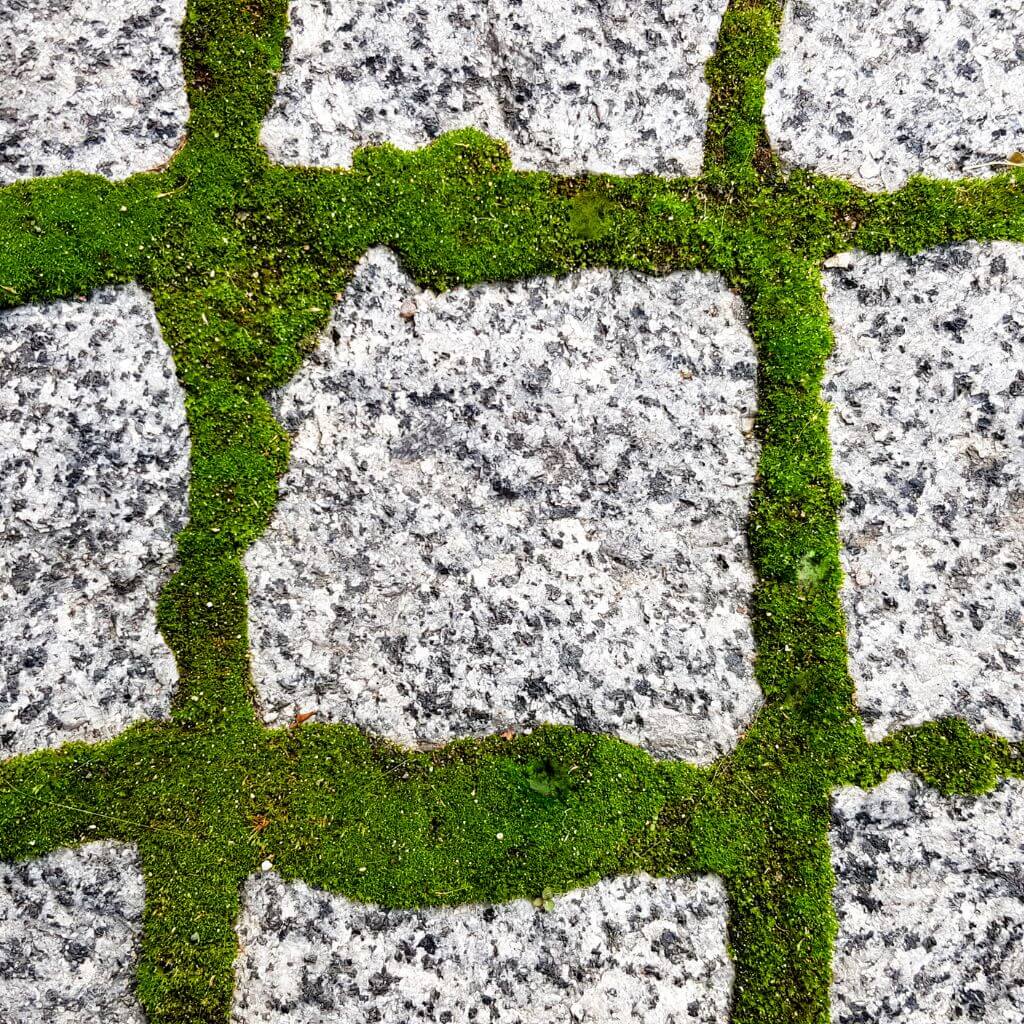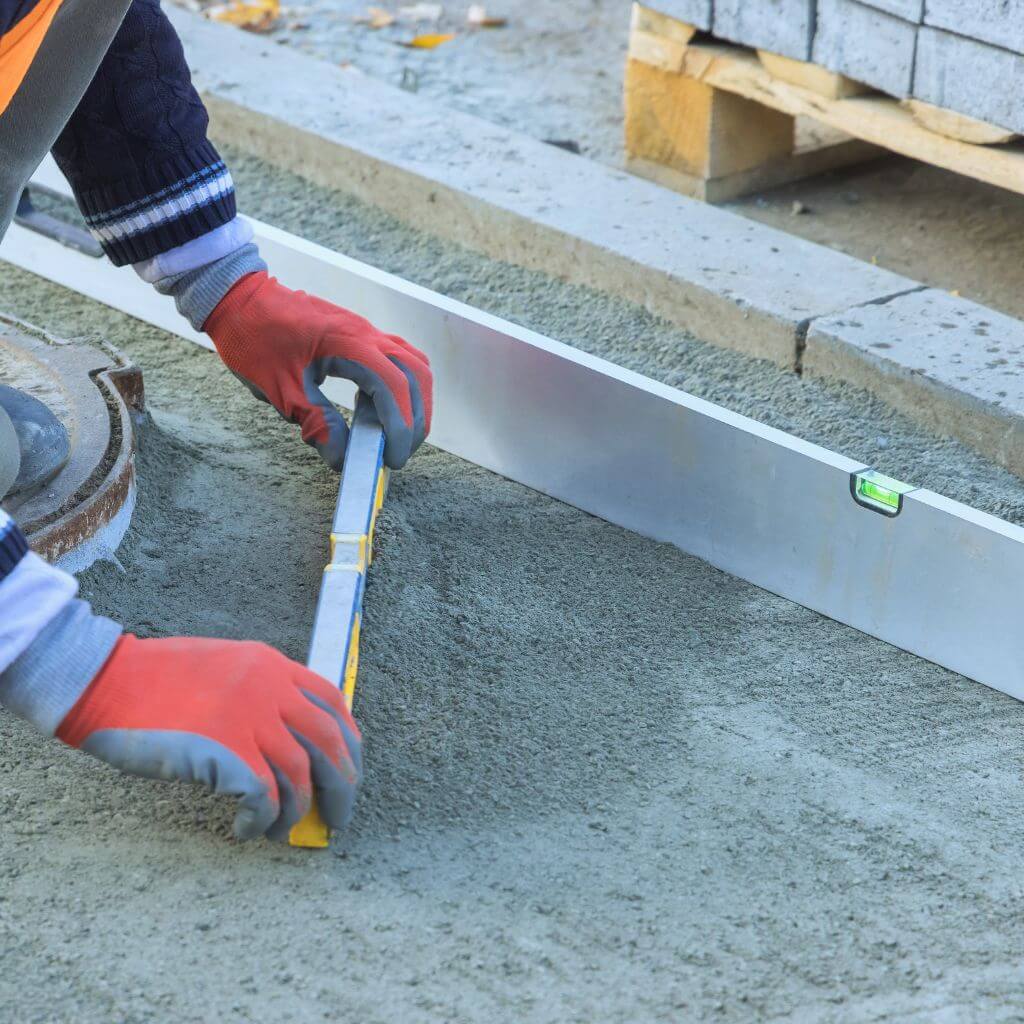
Imagine transforming your ordinary backyard into a stunning outdoor oasis, complete with a beautiful paved patio area. With our step-by-step guide on laying paving slabs on grass, you can easily bring this vision to life. By following these simple instructions, you’ll be able to create a sturdy foundation, select the perfect paving slabs, and lay them down with precision. Say goodbye to a boring lawn and hello to a stylish and functional space that you can enjoy for years to come. Let’s get started!
Preparing the Area | Laying Paving Slabs on Grass
Before you can begin laying paving slabs on grass, it’s essential to prepare the area properly. This involves several steps that will ensure a stable and level surface for your new pavement.
Assessing the Site
The first step in preparing the area is to assess the site. Take a look at the space you have and consider the purpose of the paved area. This will help you determine the size and shape of the paved section and plan accordingly.
Gathering Materials
Once you have assessed the site, make a list of the materials you will need. This may include paving slabs, edge restraints, hardcore, sand, weed membrane, and mortar mix. It’s important to ensure you have all the necessary materials before starting the project.
Measuring and Marking Out
Next, measure and mark out the area where you will be laying the paving slabs. Use string lines and stakes to create a clear outline of the space. This will help you maintain accuracy and ensure the final result meets your expectations.
Clearing and Leveling the Grass
Before proceeding further, clear the grass within the marked area. Use a shovel or turf cutter to remove the top layer of grass and any weeds. Once you have cleared the grass, take the time to level the ground. Ensure there are no bumps or uneven sections, as this will affect the stability of the paved area.
Preparation of Sub-base
Creating a strong sub-base is crucial to the longevity of your paved area. Follow these steps to prepare the sub-base properly.
Digging Out the Grass
To create a stable sub-base, you must dig out the grass and organic matter from the marked area. Use a shovel or turf cutter to remove the remaining grass roots and ensure you reach a depth of at least 150mm.
Excavating Soil
After removing the grass, excavate the soil to create space for the sub-base layers. Dig down to a depth of approximately 100mm to accommodate the necessary materials.
Installing Edge Restraints
Edge restraints are essential to keep the paving slabs in place and prevent them from moving or spreading over time. Install edge restraints around the perimeter of the excavated area, ensuring they sit securely and are level with the ground.
Compacting the Subsoil
Once the edge restraints are in place, compact the subsoil using a plate compactor or a hand tamper. This will help create a solid and level base for the sub-base layers.
Adding a Layer of Hardcore
After compacting the subsoil, add a layer of hardcore (crushed stones or gravel) to the excavated area. Spread it evenly, ensuring a depth of approximately 50mm. Hardcore provides stability and helps with effective drainage.
Compact the Hardcore
With the hardcore in place, use a plate compactor or a hand tamper to compact it firmly. This will create a solid and sturdy sub-base for your paving slabs, minimizing the risk of sinking or shifting over time.

Laying Weed Membrane
Weed membrane is an important element in preventing weed growth and maintaining the longevity of your paved area. Follow these steps to lay weed membrane effectively.
Unrolling the Weed Membrane
Begin by unrolling the weed membrane over the compacted hardcore. Ensure it covers the entire excavated area, with a slight overlap at the edges. Weed membrane acts as a barrier, preventing weed growth and protecting the integrity of the sub-base.
Cutting and Securing
Cut the weed membrane to fit the shape of the paved area, making necessary adjustments as needed. Secure the edges of the membrane with landscape fabric pins or galvanized staples to keep it in place.
Preventing Overlap
When laying the weed membrane, avoid any excessive overlapping. Overlapping can lead to unevenness and create areas where weeds can penetrate the surface. Ensure a smooth and seamless transition between adjacent sections of the weed membrane.
Pinning Down the Membrane
To secure the weed membrane further, use landscape fabric pins or galvanized staples to pin it down at regular intervals. This will prevent the membrane from shifting during the installation of the paving slabs.
Bedding and Leveling Sand
Bedding and leveling sand is crucial for creating a stable and smooth surface for the laying of paving slabs. Follow these steps to ensure proper installation.
Distributing Bedding Sand
Start by distributing a layer of bedding sand over the weed membrane. Spread it evenly using a rake or shovel, ensuring a consistent depth of approximately 35mm. Bedding sand will provide a cushioning effect, allowing for slight adjustments and aiding in leveling the paving slabs.
Leveling the Sand
Next, use a screed board or a long, straight piece of timber to level the sand. Move the screed board back and forth in a sawing motion, filling any low points and removing excess sand from higher areas. This will create a smooth and even surface for the paving slabs.
Using a Screed Board
To ensure accurate leveling, use a screed board that spans the width of the paved area. Place it on top of the edge restraints and push and pull it across the sand, using a sawing motion. This will help create a consistent depth and levelness.
Checking for Levelness
Regularly check the levelness of the sand using a spirit level or a straight edge. Make adjustments as necessary, adding or removing sand to achieve an even and level surface. A properly leveled sand bed is essential to ensure the stability and aesthetic appeal of the finished paved area.

Selecting and Placing Paving Slabs
Selecting the right paving slabs and placing them correctly is crucial for a successful and visually appealing project. Follow these steps to ensure a professional-looking finish.
Choosing the Right Paving Slabs
Before laying the paving slabs, carefully consider the style, size, and color that best complements your outdoor space. Ensure the paving slabs are suitable for the intended use and can withstand the expected foot traffic. Select slabs that meet your aesthetic preferences while also adhering to your budget.
Positioning the First Slab
Begin by positioning the first paving slab in a corner or against a fixed structure, such as a house wall or step. Ensure it sits flush against the edge restraints and is level with the surrounding ground. This first slab will act as a reference point for the rest of the installation.
Adding Spacers
As you continue to lay the paving slabs, use plastic spacers or wooden dowels to maintain consistent gaps between each slab. These gaps will allow for jointing compound application and accommodate natural expansion and contraction during temperature changes.
Filling the Remaining Area
Following the positioning of the first slab, lay the remaining paving slabs according to your desired pattern or design. Take care to ensure each slab is level with the previous one and fits snugly against the spacers. Continuously check for levelness and adjust the sand bed as needed.
Cutting Slabs
In some cases, you may need to cut the paving slabs to fit specific areas or around obstacles. Properly cutting the slabs will ensure a neat and professional-looking finish. Follow these steps to cut slabs accurately and safely.
Measuring and Marking the Slab
Before cutting the slabs, measure the area that needs to be filled. Transfer the measurements onto the slab using a pencil or chalk. Double-check the measurements and markings to avoid any unnecessary mistakes.
Using a Diamond Blade Saw
To cut the slabs, use a diamond blade saw specifically designed for this purpose. Follow the manufacturer’s instructions for operating the saw and wear appropriate safety gear, including safety glasses and gloves. Cut slowly and steadily, allowing the saw to do the work and avoiding excessive pressure.
Applying Water to Reduce Dust
To minimize dust and keep the cutting area clean, apply water to the slab while cutting. This will help control dust particles and prevent them from spreading through the air. Use a hose or a spray bottle to wet the surface of the slab before and during the cutting process.
Wearing Appropriate Safety Gear
Always wear safety glasses, gloves, and hearing protection while cutting paving slabs. The sawing process can produce sharp debris and excessive noise, so proper protection is essential to prevent accidents or injuries.
Securing Slabs
To ensure the longevity and stability of your paved area, it’s important to secure the paving slabs in place. Follow these steps to secure the slabs effectively.
Applying Mortar Mix
Apply a mortar mix to the back of each paving slab before laying it on the sand bed. Use a trowel to spread a thin layer of mortar, ensuring full coverage across the slab’s surface. Mortar will provide added strength and stability to the slabs.
Using a Mortar Jointing Compound
Once the slabs are securely in place, use a mortar jointing compound to fill the gaps between them. Follow the manufacturer’s instructions for preparing and applying the jointing compound, ensuring it is evenly distributed and firmly pressed into the gaps.
Checking Alignment and Levelness
Regularly check the alignment and levelness of the paving slabs throughout the installation process. Use a spirit level or a straight edge to ensure they are in line with each other and do not create any uneven or tripping hazards.
Removing Excess Mortar
After applying the jointing compound, remove any excess mortar from the surface of the slabs using a trowel or brush. This will prevent it from drying and hardening on the surface, ensuring a clean and professional finish.
Finishing Touches
Completing the paving slab installation involves a few finishing touches that will enhance the overall appearance and longevity of the paved area. Follow these steps to add the final touches.
Sealing the Paving
Consider sealing the paving slabs with a suitable sealer to protect them from stains, moisture, and color fading. Choose a sealer that is specifically designed for your type of paving slabs and follow the manufacturer’s instructions for application.
Brushing in Jointing Compound
After allowing the jointing compound to dry, brush it in using a soft brush or broom. This will ensure the compound is fully pressed into the gaps between the slabs, providing stability and preventing weed growth.
Adding Decorative Gravel
If desired, add decorative gravel around the edges of the paved area to create a finished look. This can also help with weed control and provide a defined border between the paved area and the surrounding landscaping.
Cleaning Up the Area
Once the paving slabs are securely in place and the finishing touches are complete, take the time to clean up the area. Remove any excess debris, tools, or materials, and tidy the surrounding space. This will leave you with a clean and inviting paved area ready for use.
Caring for Paved Area
To maintain the appearance and functionality of your paved area, regular care is necessary. Consider the following tips for keeping your paved area in top condition.
Regular Cleaning
Regularly clean the paved area by sweeping or using a leaf blower to remove loose debris. Periodically wash the surface with water and a mild detergent to remove any stains or dirt buildup. Avoid using harsh chemicals or pressure washers that may damage the paving slabs.
Weed Control
Prevent weed growth by periodically checking and removing any weeds that appear between the paving slabs. Use a weed killer specifically designed for use on paved areas, or manually remove the weeds by hand. Regularly applying jointing compound can help minimize weed germination.
Repairing Damages
In case of any damages or loose slabs, promptly address the issue to prevent further damage or accidents. Repair or replace any cracked or damaged slabs, ensuring they are properly secured and leveled. Attend to any loose or crumbling jointing compound by reapplying it as needed.
Additional Tips and Considerations
Consider the following additional tips and considerations to ensure a successful and enjoyable paving slab installation.
Considering Drainage
Ensure proper drainage by incorporating a slight slope or gradient into the design of your paved area. This will allow rainwater to flow away from the surface and prevent water pooling or damage to the sub-base.
Anticipating Future Changes
When planning your paved area, consider future changes or expansions. Leave enough space for future additions or modifications, such as the installation of outdoor furniture, planters, or other landscaping features.
Seeking Professional Help
If you are unsure about any step in the process or feel overwhelmed, consider seeking professional help. A qualified landscaper or contractor can guide you through the installation process and ensure a successful outcome.
Being Patient and Careful
Take your time during each step of the process and pay attention to detail. Rushing can lead to mistakes or unsatisfactory results. Be patient and careful, and enjoy the journey of transforming your grassy area into a beautiful paved space.
By following this step-by-step guide, you can confidently lay paving slabs on grass and create a stunning and functional outdoor space. With proper preparation, installation, and ongoing care, your paved area will provide years of enjoyment and enhance the overall aesthetic appeal of your property.












